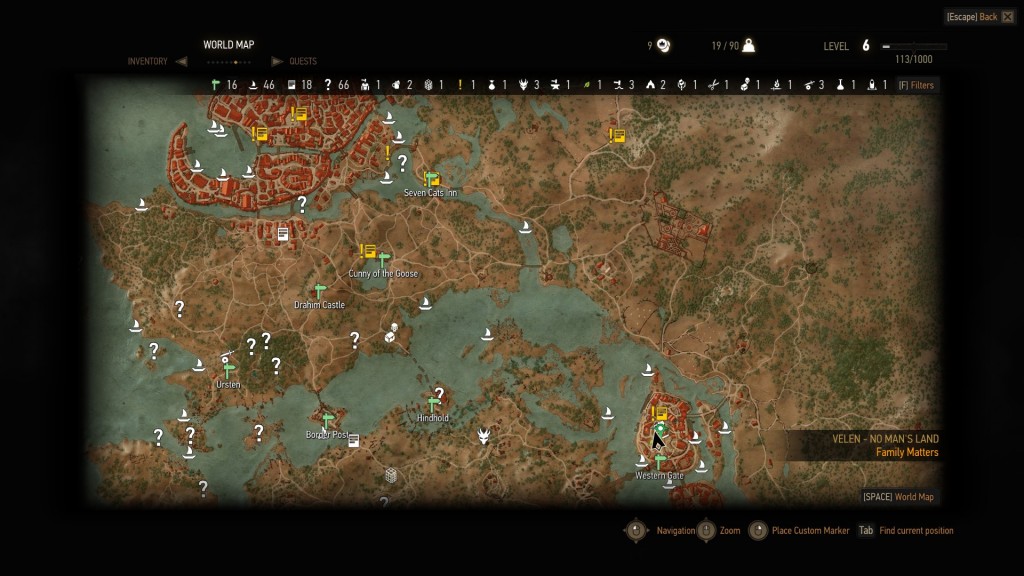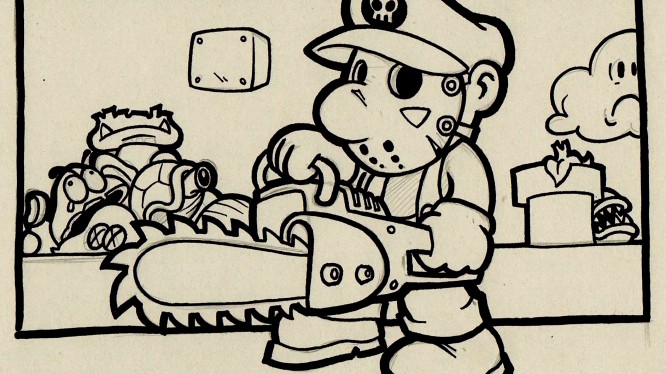


Faction warfare has been a part of EVE Online for about ten years now, and it has enjoyed surges in popularity over that time as the mechanics and rewards involved have changed. This ebb and flow, along with the usual mechanical tweaks to various ships and modules, has helped make faction warfare an extremely dynamic part of the game experience; virtually every update impacts the factional warfare field in some way. Factional warfare draws people in for many reasons. For people who like to pvp, it offers a varied, target rich environment, with players of literally every skill level to oppose you. For people who enjoy the backstory of EVE and/or who may like to roleplay, the faction war offers the only real way one can “fight for their side” outside of nullsec space. And of course, it is a way to make a lot of money, which has served to attract both experienced players and complete novices. In the militia, even very new characters are able to make a rather sizeable amount of money in a short time by simply heading off to capture complexes in a cheap Tech 1 frigate. There are a lot of good reasons for people to try it out.
But, once someone enlists in the militia… now what? The core concept of the militia is simply capturing and holding systems in the warzone, that region of low-security space which has been reserved for militia use. Via the militia interface in game, you can easily see which systems are held by which side, which systems are contested, and how contested those systems are. You can also clearly see this information for the system you are actually in within the system indication box in the upper left (by default) of your screen when you enter a faction warfare system.
Systems are contested by capturing factional warfare complexes, known simply as “plexes”. Every plex you capture within a system held by the enemy militia(s) contests the system a bit more. Capturing plexes in enemy held systems is known as “offensive plexing” or simply “plexing”. Capturing plexes in systems your own militia controls de-contests them. This is typically known as “defensive plexing”. The idea behind all of this is to capture complexes in enemy held systems until the system reaches 100% contested, at which point it becomes “vulnerable”. Once a system is vulnerable, the infrastructure hub in the center of the system can be attacked, and control of the system will switch to the capturing side. Do be aware that you cannot dock in stations that are located in systems controlled by the enemy, so capturing systems has an added layer of strategic importance. The more systems your side controls, the higher your warzone control tier can be, the more money you can make… wait, how do I make money doing this again?

Plexing, both offensively and defensively, earns loyalty points, often simply abbreviated as LP, which you can use to purchase a wide variety of items, from ships and ammo to implants and clothing, from the loyalty point stores in your militia’s stations. As you can get these items from the loyalty point store significantly below the price at which you can resell them on the market, this is how you will make your money. Offensive plexing earns a good deal more LP than defensive plexing, and the larger the size of a plex you capture, the more LP it awards. The higher the warzone control your militia has, known as “tier”, the more LP plexing awards, and these increases to LP payment are very, very significant; at tier 5, you will earn the normal amount for capturing a complex, plus a bonus of 225% extra, simply for being at tier 5. Essentially, the better your militia is doing, the more money you make… with the rub that, of course, if you control every system (this doesn’t happen often, but it has once or twice) you have nowhere to offensively plex.
There are different sizes of complexes; novice, small, medium, and large. These sizes determine what types of ships may enter the complex, what types of enemy NPCs (usually called “rats” in game) will be defending the complex, how long it takes to capture, and how many LP you will be awarded for capturing the complex. Novice complexes may only be entered by Tech 1 frigates or faction frigates and take ten minutes to capture. Small complexes may be entered by ship classes up to and including Tech 2 frigates and Tech 1, 2, or 3 destroyers and will take 15 minutes to capture.
Medium complexes can be entered by ship classes up to and including Tech 1 or 2 cruisers and will take 20 minutes to capture. And lastly, large complexes may be entered by any size of ship, even capital ships, and require 20 minutes to capture. These complexes should clearly show up on your overview when you are in space in a faction warfare system, if your overview is configured to show them; you should check your overview settings to be sure that “Beacon” is checked. If you do not see any plex beacons on your overview, you can simply check your Probe Scanner in your Dscan interface to locate some. A plex will remain hidden until someone uses this interface and warps to the plex, which is known as “popping the plex” in FW parlance. Once the plex has been popped, it will be plainly visible to anyone entering the system. It is the fact that plexes are clearly visible and easy to warp to that makes this fun!

When you see a plex on overview, you should not warp directly to it unless you know for a fact it is not occupied, or do not care if it is. For instance, if you see that you’re the only person in local, well… there obviously won’t be an enemy waiting in that plex. However, if there are other people in local with you – particularly wartargets, of course, but neutrals should be treated cautiously too – then it is best to do a quick directional scan of the complex before you warp to it. This will tell you what ship(s) are inside, if any, with one exception; combat recons – the Lachesis, Curse, Huginn, and Rook – do NOT show up on directional scans, so be very cautious when entering unknown medium complexes. They can enter large complexes too, but, as large complexes do not have acceleration gates, you can warp to it at a distance and take a peek. Speaking of the acceleration gates at novice, small, and medium complexes, you should get in the habit of always warping to these at 10km, and not warping directly to the plex beacon/gate. If you warp to zero, you can get tangled up in the gate, bouncing and banging about, and unable to warp off quickly or take distance in certain directions, should an enemy arrive at the same time. As an aside, if you are popping a previously unopened plex, you don’t need to scan it, as you know no one will be in there, but be warned that a new plex beacon appearing on the overview is like fresh fish to a hungry cat; everyone in system looking for a fight will likely warp to it immediately.
So, now you’ve found a plex, scanned it, and found it to be unoccupied, so you warped to it at 10 km and activated the acceleration gate… what’s next? I am going to assume that you’re in an intelligently fitted ship, suited to the size of plex you’re planning to capture; if you need help with this, talk to corpmates or fellow militia members, email me in-game, or even look for other articles here, on the site. Now, once you’re inside, you will see the beacon that controls the plex, and you should see a timer and perhaps an enemy NPC ship. Kill the NPC and stay within 30k of the beacon, often called “the button” and watch the timer count down.
When it reaches 0, you will receive an email from your militia informing you that you have received an LP award, and how large that award was. Easy, right? Well, remember, you’re in low-security space, sitting at a beacon everyone can see and freely warp to… pirates, enemy militia members, and the like will all only be too eager to prevent you capturing that plex. It is a good idea, then, to keep a close eye on your directional scanner while you orbit the button, and to keep an eye on local chat, watching for new enemies or neutrals to enter system. I like to set the scanner’s range to 1,000,000 km, as the acceleration gate is 100,000 km away from the button; thus, if I see another ship on my scanner, I know it is at the gate, and that I should be ready to fight or run. But, well… which do I do?
Well, that decision is the core of what makes factional warfare exciting, and whether you fight or run is dictated by myriad factors; is the enemy alone, what sort of ship are they in, what sort of ship are you in, how skilled are you, and so on and so on. If you do not believe you can win, there is certainly no shame in running off; you cannot capture a plex when you’re dead. However, if you run every time, you will never earn any LP, and hence, you will make no money, nor will you be contributing to your side’s control of the warzone. So sometimes, frankly, you’re going to have to fight. Of course, if you decide you like fighting more than circling buttons, I have good news; you earn loyalty points for that, too! You will receive a reward of LP for every enemy ship you take part in destroying; how much LP you receive depends on how much of the damage to the ship you did and how much it was worth. You might decide that you enjoy chasing other people down more than you like capturing plexes, or you might decide that you like doing factional warfare missions. Whatever you enjoy, factional warfare is certainly one of the most exciting parts of EVE Online, and it is one that players of all skill levels can participate in.
Remember, fly it like you stole it!




 The Witcher 3 Wild Hunt Guide: How To Get Hairstyles, Beard DLC And Location Of Barber
The Witcher 3 Wild Hunt Guide: How To Get Hairstyles, Beard DLC And Location Of Barber Massive Thought: Virtual Violence .
Massive Thought: Virtual Violence . Guild Wars 2: Ascalonian Catacombs Dungeon Guide .
Guild Wars 2: Ascalonian Catacombs Dungeon Guide . World of Tanks: A Beginner's Guide to Artillery in the Shooter
World of Tanks: A Beginner's Guide to Artillery in the Shooter Neverwinter Underdark Interview with Producer Lindsay Haven .
Neverwinter Underdark Interview with Producer Lindsay Haven .